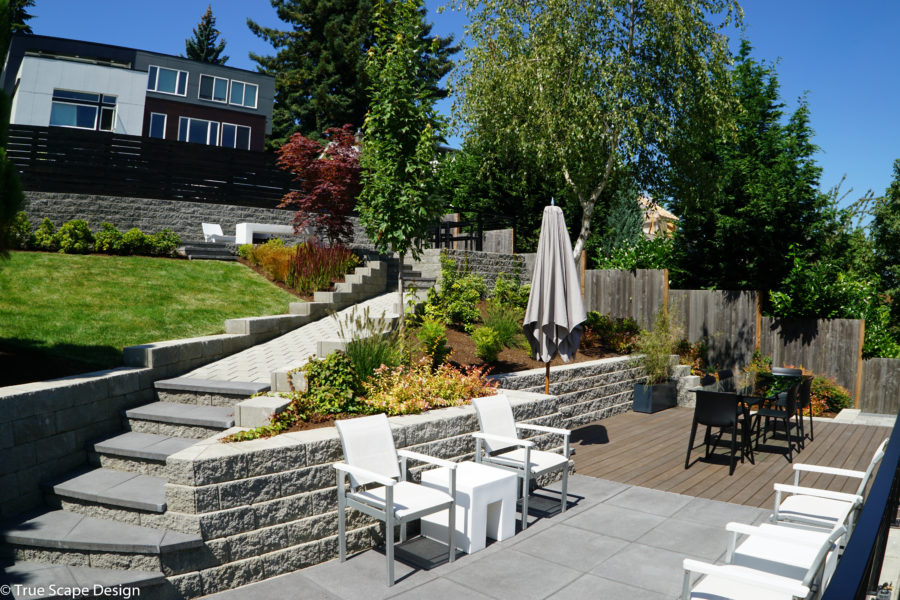The Basic Principles Of Landscape Design
Wiki Article
The smart Trick of Landscape Design That Nobody is Talking About
Table of ContentsLandscape Design for DummiesEverything about Landscape DesignUnknown Facts About Landscape DesignThe Main Principles Of Landscape Design
When creating a household landscape, one of the most vital step is to put a plan on paper. Developing a master plan will conserve you time and cash and is more probable to result in a successful style. Landscape Design. A plan of attack is developed with the 'layout process': a step-by-step approach that considers the ecological conditions, your needs, and the aspects and concepts of styleThe five actions of the layout process include: 1) carrying out a website supply and analysis, 2) identifying your needs, 3) creating functional representations, 4) creating conceptual design strategies, and 5) drawing a last design plan. The initial 3 actions establish the aesthetic, practical, and gardening requirements for the layout. The last two actions after that use those demands to the creation of the final landscape plan.
This is a vital action for both plant option and positioning and locating family members tasks and functions. It is very important since the same climate conditions that impact the plantstemperature, moisture, rain, wind, and sunlightalso affect you, the individual. The next step is to make a checklist of your needs and desiresthis assists you figure out exactly how your yard and landscape will certainly be used.
The useful diagram is then used to locate the task areas on the site and from this diagram a conceptual plan is developed - Landscape Design. The last step is a final layout that includes all the hardscape and planting information that are needed for installation. Throughout the design process there are 10 crucial things to take into consideration: for plant choice and task area by considering what you desire and require to help identify forms and arrange areas by marking activity areas and relating to aspects for both the atmosphere and the user by making use of massing and layering techniques such as shift areas and centerpieces in the materials, the colors, and the surface appearances for the growth and upkeep of plants by using lasting design techniques A detailed inventory and evaluation of the site is necessary to determine the ecological problems for plant development and the best usage of the website
Examine This Report on Landscape Design
It is always best to make use of plants that will flourish in the existing dirt. Where plants grow well, keep in mind the soil problems and make use of plants with similar expanding requirements.
Sun/shade patterns, the amount and size of exposure to sunlight or color (Number 1), develop microclimates (in some cases called microhabitats). Recording site problems and existing plant life on a base map will reveal the area of microclimates in the lawn. Plants usually drop into 1 or 2 of 4 microclimate categories-full sunlight, partial color, color, and deep shade.
look here Utilities such as power lines, septic tanks, underground energies and roofing system overhangs establish plant location. Utilize a land surveyor's plat of your residential property for the boundaries and location of your home.
How Landscape Design can Save You Time, Stress, and Money.
Spending plan problems include the products, initial installation prices and the on-going maintenance costs. Figure out the moment and cash you are willing to place right into maintaining the plants and visit site hardscape-be reasonable regarding your intents and capacity. Figure 3. Existing use locations. Credit Report: Gail Hansen, UF/IFAS Figure 4. Proposed usage locations. Credit Score: Gail Hansen, UF/IFAS There are lots of different landscape design themes- from straightforward to facility, however it is helpful to pick one to guide your plant and material choice.
Choose if you want to open your lawn, shut your backyard, or a little of both, to these views. Simply put, do you want the yard to confine the area around you and relate primarily to your house, or do you desire the yard to open sights and look outward, associating to the environments? This will certainly offer you a beginning factor to think of a style.
Landscape Design Can Be Fun For Everyone

Every yard needs to have a form motif, yet not all gardens have a style motif. Numerous residential yards have no particular style other than to mix with the residence by duplicating information from the architecture such as materials, shade, and type.
In a form motif the organization and form of the areas in the lawn is based either on the shape of the home, the shape of the areas in between your home and the property borders, or a preferred shape of the property owner. The kind motif establishes the shape and organization (the layout) of the spaces and the links in between them.

Report this wiki page